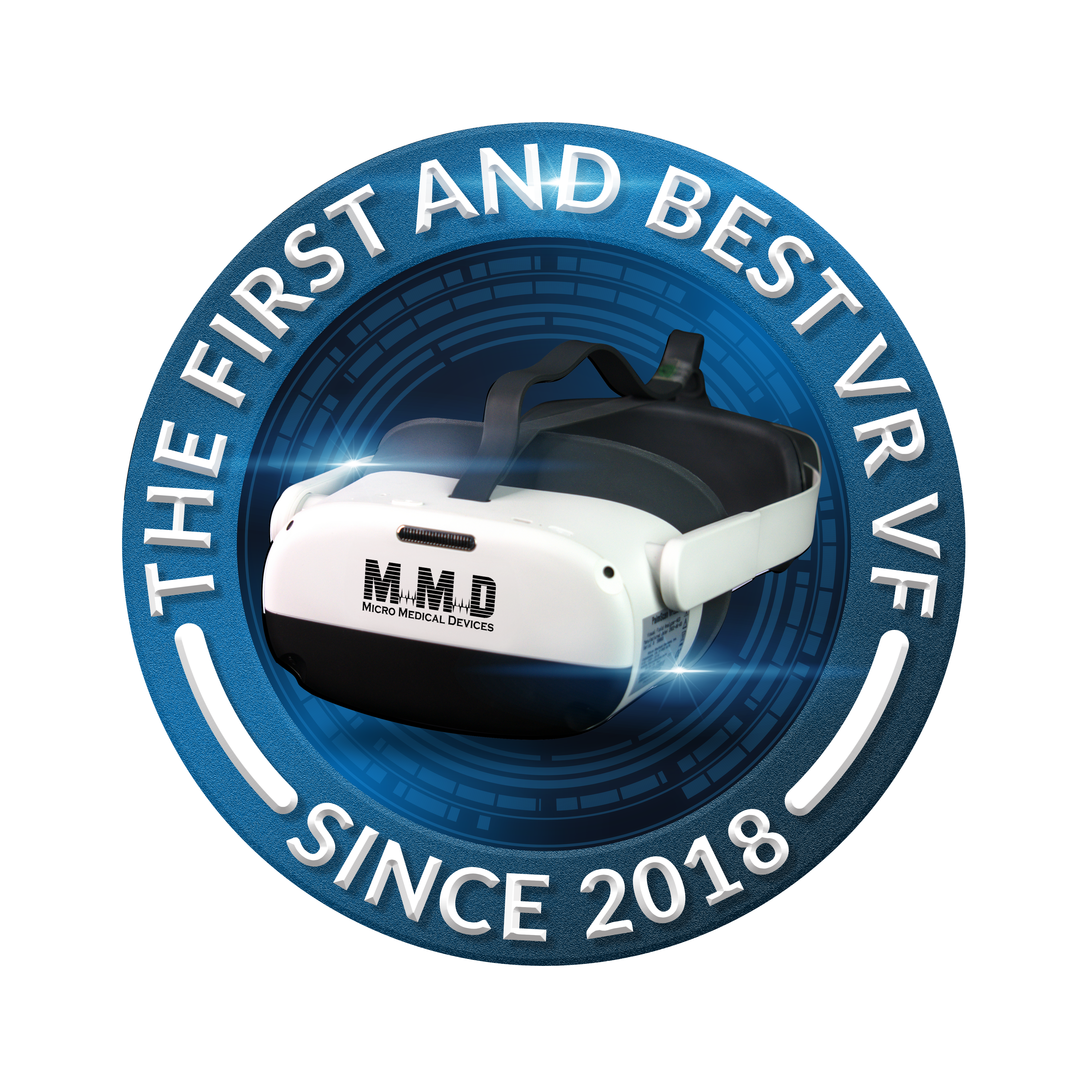VR-based perimetry systems aren’t just convenient—they’re a strategic investment with measurable returns.
HFA table top visual field analyzers are the gold standard and while there are other slightly more compact and affordable table top visual field analyzers, they often come with the same limitations that restrict capacity and profitability.
Portable visual field analyzers offer a different model. These lightweight, technician-light headsets provide diagnostic flexibility while reducing overhead. Here’s how practices are improving ROI through cost savings and new revenue opportunities.
How Traditional Visual Field Testing Limits Efficiency
Table-top perimeter systems were all we had for decades, and they all share common challenges to this day:
- Dedicated testing rooms: Most tabletop systems require a separate dark, quiet room.
- Reduced patient flow: Each test involves moving patients from the exam lane to a testing room and back, adding delays.
- Static workflow: A stationary device cannot adapt to scheduling or staffing changes.
The result: reduced productivity, increased liability, and higher costs due to equipment tying up space and staff.
How Portable Visual Field Analyzers Improve Throughput and Revenue
VR-based perimeters like the VF2000 are self-contained headsets that can be used anywhere in the clinic—even in the exam lane.
Key advantages include:
- No dedicated testing room required: Run visual field tests in the same lane where the exams occur.
- Minimal staff involvement: Once the test is initiated, the headset provides instructions for the patient, freeing technicians for other tasks.
- Higher daily volume: By eliminating bottlenecks, practices can complete more reimbursable tests each day with the same staff.
These efficiencies allow practices to see more patients and increase billable services, directly supporting revenue growth.
Billable Codes That Drive Reimbursement
Virtual Visual Fields support a range of reimbursable diagnostic codes. MMDs VF2000 models also offer optional modules that increase your test capabilities without increasing your device footprint. Here’s some common CPT codes including visual field, color, and other optional module codes:
- 92081
- 92082
- 92083
- 92283
- 95919
Because portable headsets meet the same clinical standards as tabletop systems, practices can confidently bill the 92xxx and the 99xxx codes while benefiting from improved efficiency.
Real Estate Matters: More Capacity, More Revenue
Replacing a stationary perimeter with a VR headset frees up valuable floor space. That room can be repurposed for:
- An additional exam lane
- A secondary testing station
- A revenue-generating service such as imaging or contact lens fitting
For practices in high-cost urban areas or satellite offices with limited space, this flexibility can significantly improve ROI and for offices that have already invested in a costly tabletop perimeter, a VRVF makes a perfect second unit to help with bottlenecks.
Choosing a System That Supports Growth
Micro Medical Devices designed the VF2000 to help practices test smarter—not just faster. With features such as multilanguage automated instructions, the ability to test with or without internet, and optional testing packages to increase your testing capabilities, these systems are built to support long-term profitability.
Whether your goal is to increase patient volume, reduce staff strain, or maximize use of your space, portable diagnostic technology offers measurable returns.
Book a Demo Today
Discover how the VF2000 series can increase your billable testing volume, lower overhead costs, and free up valuable space for revenue-generating services. Schedule a demo with Micro Medical Devices today and see how portable perimetry supports long-term growth for your practice.







